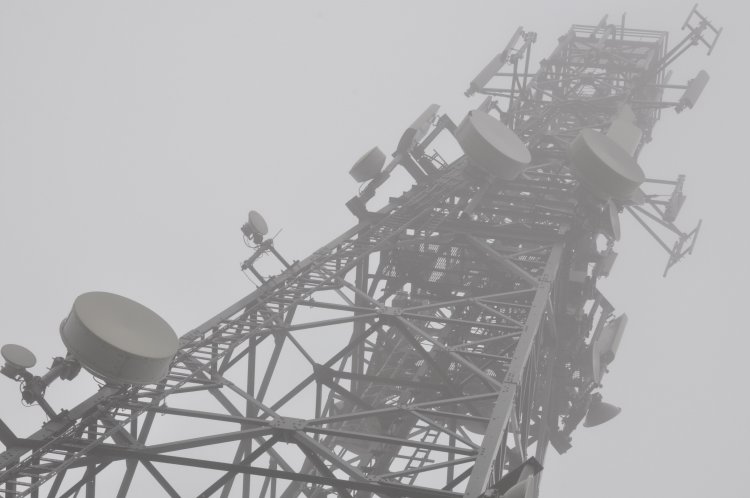Next-generation 6g mobile communications will cost the world 100 billion dollars, and construction of new networks will begin in 10 years. This was disclosed in Skoltech with an extra note that innovative communication technologies are expected hit the Russian market in about 2033-2036. Scientific Russia recounts the history of mobile communications.
First Generation
The letter designation “G” after a digit means “generation” in the context of mobile communication. The first generation appeared in 1984. The technology commercialized back them was based on analog data transmission. Its throughput was a meager 1.9 kbps – the system was only suitable for voice calls, but that’s what it was developed for. First-generation communications had no encryption, conversations could be bugged and calls were expensive.
Texting and Early Mobile Internet
A new digital data transmission standard evolved in early 1990s. That’s when the concept of SMS was introduced. New features in the GSM standard included encrypted conversations and a peak data rate of 115.2 kpbs.
2g networks became a springboard for the mobile Internet we know today. The GPRS technology followed GSM and allowed data transmission to facilitate satellite tracking of vehicles, access to corporate networks, mail and information servers. A more recent development, EDGE, used a different data encoding technique boosting the throughput to 474 kbps. GPRS and EDGE technologies and referred to as 2.5g.
The Millennial Generation
Third-generation data communications were developed by intelligence agencies in 1980 and had remained secret until early 2000s. 2G systems use the time-division multiple access method or TDMA. A fundamental difference with 3G networks is the code division multiple access technology.
Third-generation networks are secure against disruptions when the subscriber is on the move. As one moves away from one tower, the signal is gradually handed over to the next one: the new tower begins to transmit more information, while the old one transmits fewer and fewer. This continues until the subscriber leaves the coverage area. A high-quality coverage of the network reduces the probability of losing communication.
Our Days
In 2021, the 4g communications technology remains current in Russia. The WiMAX and LTE technologies support data rates up to of 100 Mbps when transmitting data to on-the-go subscribers and 1 Gbps for fixed subscribers. Data rates that high are the main requirement for modern communications technology.
Wireless 4g, unlike the previous generation, only uses digital data – it has no voice channel at all. That means that over time, calls will be made through a VoIP channel, obviating the need for classical communications.
The Future Ahead of Us
South Korea was the first country to launch fifth-generation wireless service in 2019. 5g communications technology may set foot in Russia in 2023-2024. This delay is due to the need for developing software and manufacturing equipment exclusively in Russia. Such was the decision made due to the need of restoring the domestic telecommunications industry.
Fifth-generation technologies use multiple antennas on transceivers. That is why both the data rate and signal quality are greater. The 5G signal occupies a higher frequency band – meaning there will be less interference but transmitters should be more powerful and stations should be placed closer to each other. 5g also uses “network slicing” – there may be separate isolated networks for different tasks in the future. For example, with a separate network for the Internet of Things and another one for broadcasting, overloads and delays in signal transmission can be avoided.
Telemedicine is considered as one of the applications of 5g. Thanks to its high speed, the new technology makes it possible, for example, to monitor what is happening in a remote operating room, to correct of actions of other doctors or to control auxiliary instruments. In addition to medicine, 5g networks can give impetus to the development of unmanned transport: the high data transfer rate will allow fully automatic transport to interact effectively with infrastructure objects.
Ten Years Down the Road
The timespan between new generations of mobile communications is about 10 years. Similar forecasts are made concerning the sixth generation – 6g networks may appear in the world in the 2030s, and their development is already underway despite the fact that the fifth-generation standards have not yet been introduced everywhere and made fully operational.
6G networks involve a new architecture, including the integration of terrestrial and satellite segments. They will also use artificial intelligence technologies to optimize base station locations, reduce their power consumption, detect and repair malfunctions.
Experts say the data rate in 6G networks may be as high as 1 Tb/s. In order to obtain such speeds, it is necessary to switch to new frequencies, as the range from 100 GHz to 1 THz is considered the main range.
Photo: citadelle / ru.123rf.com
Based on news.ati.su, vseplus.com, trends.rbc.ru






















